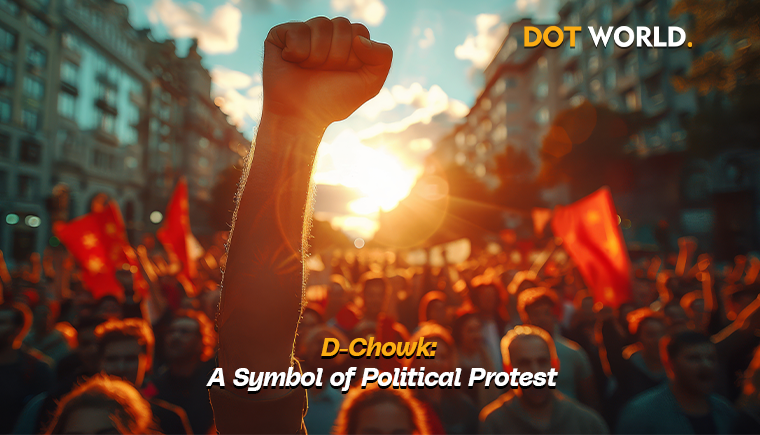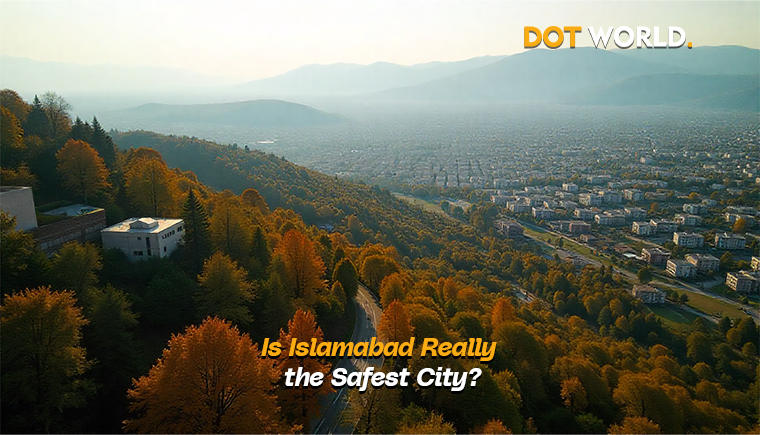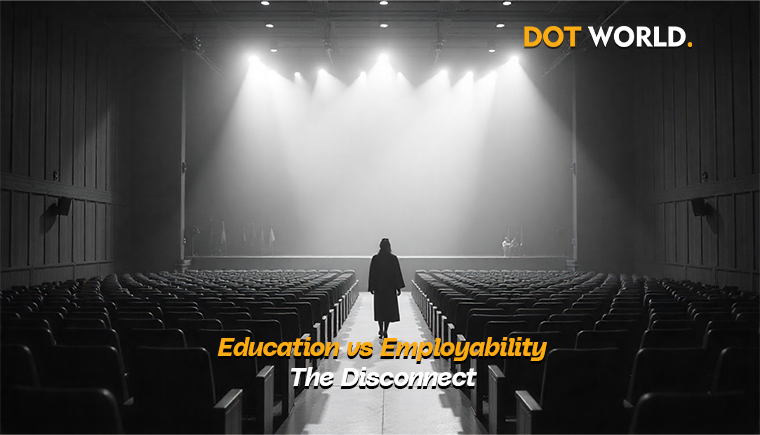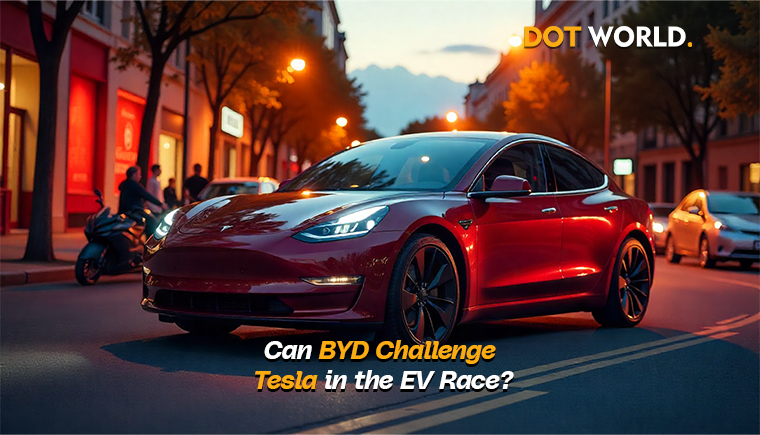In the heart of Islamabad, just outside the Parlimant, lies a seemingly ordinary intersection that has become one of the most iconic and politically charged spaces in Pakistan’s politics — D-Chowk. Over the decades, this patch of asphalt has transformed into a stage where the people confront power, where emotions spill into action, and where democratic expression clashes with state control.
But how did D-Chowk become a battleground for voices demanding change? And why does nearly every major protest in Pakistan seem to culminate here?
Let’s explore the symbolic power, historical roots, and political implications of D-Chowk, the crossroads of revolution in the capital city.
📍 What is D-Chowk?
D-Chowk (or Democracy Chowk) is a major junction located on Constitution Avenue in Islamabad, directly in front of the Parlimant House, Supreme Court, and key government buildings like the Prime Minister’s Secretariat. Strategically positioned between power and the people, it acts as a public square, even though it was never formally designed as one.
It’s not just an intersection of roads. It’s the convergence of ideology, discontent, hope, and sometimes chaos.
🕰️ The History of D-Chowk as a Protest Site
The transformation of D-Chowk into a political symbol didn’t happen overnight. It evolved over time through a series of high-impact events that defined its legacy.
📌 1980s – Zia Era Resistance
During General Zia-ul-Haq’s military regime, political activity was heavily suppressed. Even then, D-Chowk saw small acts of defiance — silent marches, gatherings of journalists and lawyers. It became a whisper of resistance during a time of fear.
📌 1990s – Benazir vs Nawaz
The tug-of-war between Benazir Bhutto and Nawaz Sharif governments brought D-Chowk into the public eye. It became a space for opposition parties to challenge each other’s legitimacy, turning protests into media events.
📌 2007 – Lawyers’ Movement
The Lawyers’ Movement was a turning point. Thousands in black coats demanded the restoration of Chief Justice Iftikhar Chaudhry. D-Chowk filled with chants, tents, and defiance — and helped restore the judiciary.
📌 2014 – PTI & PAT Dharna
One of the most memorable uses of D-Chowk was during the Pakistan Tehreek-e-Insaf (PTI) and Pakistan Awami Tehreek (PAT) dharnas. Protesters camped out for over 120 days, challenging election results and calling for Nawaz Sharif’s resignation. The area became a mini-parliament of the people, complete with speeches, food stalls, and even concerts.
“D-Chowk was no longer just a protest site — it became an alternative to the Parlimant itself.”
📌 2022 – Long March 2.0
Imran Khan’s long march after his ousting again brought D-Chowk into focus. The government sealed the area with containers, triggering clashes. The symbolism was clear: D-Chowk is where the people’s mandate confronts the state’s authority.
🧭 Why D-Chowk? The Geography of Dissent
The choice of D-Chowk for nearly every major protest in Pakistan isn’t coincidental. It’s political theater by design.
- Proximity to Power: It’s adjacent to the Parlimant, Prime Minister House, and Supreme Court — the institutions that define politics in Pakistan. Protesting here is a direct challenge to the status quo.
- Media Visibility: Its central location makes it accessible for live media coverage. A protest here is instantly a national event.
- Symbolism: The square-shaped area (hence “Chowk”) resembles the traditional town squares of old cities — a public agora for discourse and dissent.
🧨 The Double-Edged Sword of Protest
While D-Chowk has become a democratic outlet, it’s also been a source of disruption and controversy.
✅ Pros:
- Political Engagement: It keeps politicians accountable.
- Freedom of Expression: Acts as a pressure valve for public frustration.
- Youth Mobilization: Attracts students, digital activists, and artists to politics.
❌ Cons:
- Gridlocks & Insecurity: Major protests paralyze Islamabad, impacting businesses and hospitals.
- Political Opportunism: Some parties use D-Chowk for spectacle more than substance.
- Damage to Property: From tents to tear gas, it often ends in vandalism or violence.
📢 D-Chowk in the Social Media Age
With the rise of social platforms like Twitter, Facebook, and TikTok, D-Chowk protests no longer stay confined to Islamabad. A single speech, a powerful chant, or a police crackdown becomes viral within minutes. This amplification turns local protests into global conversations.
Activists now use hashtags like:
- #DChowkProtest
- #IslamabadSitIn
- #SaveDemocracy
Even diaspora communities follow what happens at D-Chowk as a reflection of Pakistan’s politics.
🧠 D-Chowk vs Parliament: Who Holds More Power?
It’s ironic that at times, the D-Chowk crowd commands more attention than the actual Parlimant.
Here’s why:
| D-Chowk | Parlimant |
| People’s platform | Institutional platform |
| Spontaneous expression | Controlled debates |
| Direct action | Policy making |
| Emotional appeal | Legal authority |
The tension between these two powers — the street and the state — defines the core of politics in Pakistan.
🔍 Who Owns D-Chowk? The State vs The People
Legally, it’s public property. Practically, it’s contested space.
Authorities have tried:
- Barricading it
- Banning protests via Section 144
- Shifting protests to Parade Ground or F-9 Park
But none of it has worked long-term. When emotions rise and elections heat up, D-Chowk reclaims its throne.
📽️ The Theatre of Protest: A Case Study
Let’s recall the 2014 PTI Dharna. People danced to DJ Butt’s beats, while Imran Khan delivered speeches about election rigging. The environment was festive yet furious. Kids, women, elders — all were part of it.
Journalists set up live studios on site. Vendors sold samosas. Stages were built. And for months, D-Chowk was Pakistan’s unofficial capital.
This was not just a protest in Pakistan, it was a performance — raw, risky, and revolutionary.
🛡️ Security and Surveillance
Due to its sensitive location, D-Chowk is under constant surveillance. During high-alert times, hundreds of Rangers, FC, and police surround the area. Drones, CCTV, and mobile jammers are deployed.
This raises concerns about:
- Freedom of Assembly
- Excessive Use of Force
- Militarization of Civil Space
Democracy is weakened when peaceful protests in Pakistan are met with batons instead of dialogue.
🧭 The Future of D-Chowk
So where does D-Chowk go from here? Will it continue as Pakistan’s protest epicenter, or fade as authorities move to control it?
Some argue for:
- Designated protest zones
- Digital townhalls
- Decentralized protests in other cities
But history says otherwise. Until Parlimant truly reflects public will, D-Chowk will remain a vital voice.
🧾 Final Thoughts
D-Chowk is more than a piece of land. It’s an idea — a symbol of resistance, resilience, and responsibility. In the battle between silence and speech, it offers a loud, unfiltered microphone to the people of Islamabad and beyond.
As long as protests in Pakistan remain necessary, D-Chowk will remain relevant. Whether you see it as a menace or a movement, one thing is certain: politics in Pakistan is incomplete without D-Chowk.





